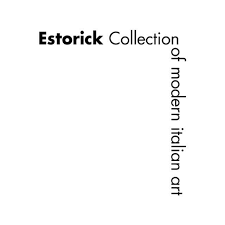Antonio Calderara (1903-1978) is renowned for his delicate and exquisitely balanced abstract imagery which, in its restraint and subtlety, exhibits affinities with the work of Giorgio Morandi. He lived and worked around Lake Orta in the north of Italy – a landscape that offered him constant inspiration and which was inextricably linked with the character and development of his art.
Beginning his career during the 1920s, he moved from an expressive figurative style to that heightened or ‘magic’ form of realism explored by many artists in Italy during the inter-war years, while his paintings of the 1930s already hinted at the subsequent direction his art would take in their precision and fascination with atmospheric effects. By the late 1950s, he had refined and distilled his depictions of the landscape to essential, geometric forms, creating images pervaded by silence and suffused with light that teetered on the brink of abstraction. From 1959, his works eliminated all references to the objective world, yet continued to explore the same harmonious formal relationships as before.
With these later paintings, Calderara proved himself to be an outward-looking artist whose imagery was attuned to contemporary developments in the field of abstraction, not only in Europe but also in the United States, having points of contact with the work of figures such as Max Bill, Josef Albers, Agnes Martin and Barnett Newman.
Organised in collaboration with the Lisson Gallery, this is the first museum exhibition to be dedicated to Calderara in the UK. It will comprise some 50 works spanning the artist’s career, including a number of figurative paintings produced prior to his transition to geometric abstraction in the late 1950s.
For more information, visit Estorick Collection of Modern Italian Art
For more information click here




